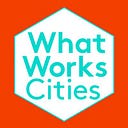Bridging the Gap between Residents and Opportunity
How Charleston, South Carolina, is using results-driven contracting while tackling its affordable housing crisis
By Ivy Gilbert
Normally, bridges are associated with connection — spanning gaps and troubled waters — but for the residents of Charleston, South Carolina’s, East Side neighborhood, that hasn’t always been the case. In 2005, the completion of the new Arthur Ravenel Jr. Bridge over the Cooper River rendered two older parallel bridges obsolete. While their remains were removed, the bridges had long presented a geographic barrier that separated the community longitudinally and fostered divisions along economic, social, and racial lines in the once-seamless neighborhood. Despite the new infrastructure, those challenges linger, and over time, the neighborhood has emerged at the epicenter of the city’s affordable housing crisis.
Charleston is committed to using data to understand local housing trends and their relation to the national housing affordability crisis, and to respond to the needs of the community accordingly. In 2014, Charleston joined nearby Berkeley and Dorchester Counties in conducting a Housing Needs Assessment. The assessment showed that affordable housing was especially hard to come by in areas with greater access to job opportunities and public transportation. It also showed that 33% percent of homeowners and 50% of renters in the region spent more than 30% of their income on housing, the U.S. Department of Housing and Urban Development’s (HUD) threshold for affordability.
Residents in the Cooper River Bridge area have watched as housing prices have soared and redevelopment efforts have occurred in fits and starts. The large areas of vacant land opened up by the removal of the parallel bridges presented the opportunity to reconnect the separated community. However, when the Great Recession hit in 2008, plans had to be put on hold, and over the next decade, the area experienced rapid gentrification that only further solidified divisions.
The harsh reality of the Housing Needs Assessment presented an opportunity for the City to respond to the crisis with an increased investment in creating affordable housing. As one major step, the City went to voters with a proposal for a $20 million bond referendum to build more affordable housing in the East Side and East Central neighborhoods. The measure passed with overwhelming approval.
The City released a request for proposals (RFP) to identify a developer to build affordable housing in the Cooper River Bridge area, but complications arose while working to finalize the contract. Among those challenges, the site is in an area prone to flooding, and its history as a roadway requires that the soil is cleaned of pollutants to prevent runoff into local waterways. Undeterred, the City tried again, this time applying results-driven contracting strategies to the procurement while working with the Government Performance Lab (GPL) at the Harvard Kennedy School as a part of What Works Cities.
[Hear from Jen North, an Assistant Director at GPL, about how cities can bring RDC and effective RFPs to their city halls, in our Q&A.]
By involving multiple departments in planning and writing the RFP as well as engaging with over 100 key stakeholders — including city staff, community representatives, developers, and nonprofits — the resulting procurement was directly connected to the City’s goals for affordable housing. The RFP detailed the history of the area and challenges that the bidder would need to address; it also listed the City’s goals for the East Side neighborhood, such as mitigating flooding, expanding affordable housing, and reknitting the neighborhood. Additionally, the RFP included a rubric to help developers clearly understand how their bids would be evaluated. The procurement also outlined a set of performance metrics that would be used to define, measure, and track the success of the development throughout the project.
Using this new approach, Charleston identified a high-quality developer for the $24 million affordable housing project, which will be partially paid for by the bond. The development is set to provide 62 affordable housing units. A quarter of those units are reserved for households that earn 50 percent of the area’s median income, with the remaining units reserved for households earning 60 percent. Charleston has gone on to apply the new strategies at its disposal to craft a subsequent RFP for a nearby site, where 45 additional affordable housing units will be built.
There’s more to be done, and the City is already applying its new data-driven tactics to the work ahead, bridging the gap between residents and opportunity.
Ivy Gilbert is a communications consultant for What Works Cities.
What Works Cities Certification — the national standard of excellence for well-managed, data-driven local government — emphasizes the importance of results-driven contracting. Complete an assessment today to get access to exclusive support from our expert partners. That support includes an upcoming Sprint on writing effective RFPs, led by the Government Performance Lab. Register here.
